MICHIGAN COUNTRY LINES
Board Election Results

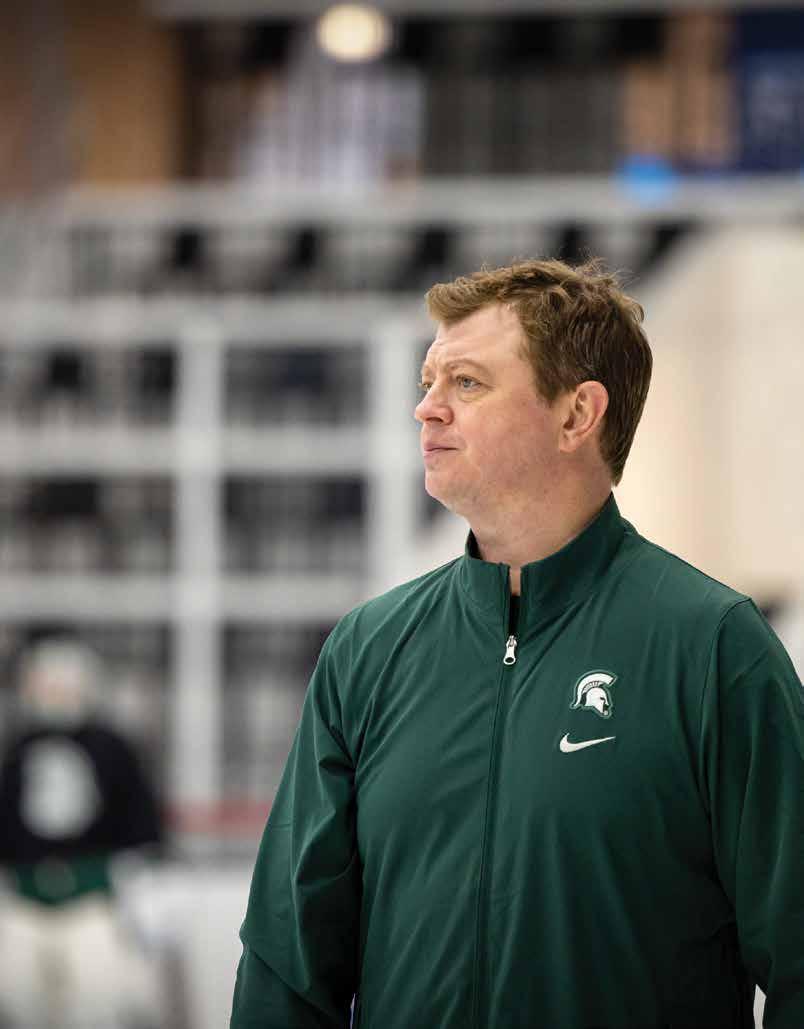

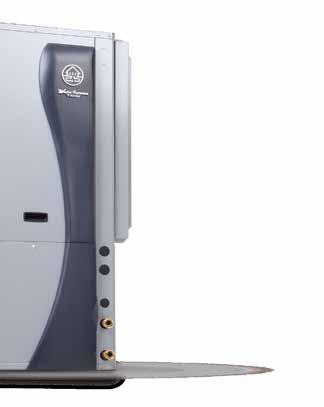

Board Election Results




You may not realize it, but you’re sitting on a free and renewable supply of energy. A WaterFurnace geothermal comfort system taps into the stored solar energy in your own backyard to provide savings of up to 70% on heating, cooling, and hot water with a comfort you have to experience to believe. Contact your local WaterFurnace dealer today to learn more about how geothermal can be a game changer for your home.
YOUR LOCAL WATERFURNACE DEALERS
Allendale Allendale Htg & Clg (800) 327-1937 allendaleheating.com
Berrien Springs WaterFurnace Michiana (269) 473-5667 gogreenmichgeo thermal.com
Big Rapids Stratz Htg & Clg, Inc. (231) 796-3717 stratzgeocomfort.com
Filion/Bad Axe
Air-O-Dynamic Htg & Clg (989) 582-0137 aod-hvac.com
Grand Rapids
Bel Aire Htg & Clg
1-888-235-2473 belaire.com
Hart Adams Htg & Clg (231) 873-2665 adamsgeothermal-mi.com
Holland G.H.P. Systems Inc. (616) 396-5833 ghpsystems-inc.com
Indian River M&M Plmb & Htg (231) 238-7201 mm-plumbing.com
Lansing
Candor Mechanical (517) 920-0890 candormechanical.com
Michigan Center Comfort 1/Air Serv of Southern Michigan (517) 764-1500 airserv.com/southernmichigan/
Mt Pleasant
Walton Htg & Clg (989) 772-4822 waltonheating.com
Portage
Bel Aire Htg & Clg 1-888-235-2473 belaire.com
Portland ESI Htg & Clg (517) 647-6906 esiheating.com
Sunfield
Mark Woodman Plmb & Htg (517) 886-1138 mwphonline.com
Three Rivers
Bel Aire Htg & Clg 1-888-235-2473 belaire.com
Traverse City
Geofurnace Htg & Clg (231) 943-1000 geofurnace.com
CO-OP REBATE INCENTIVES
Alger Delta Electric: up to $2,000
Cherryland Electric: up to $2,500
Cloverland: up to $6,275
Great Lakes Energy: up to $5,000
Homeworks/Tri-County Electric: up to $4,750
Presque Isle Electric & Gas Co-op: up to $4,750
Thumb Electric: up to $2,000


EXECUTIVE EDITOR: Casey Clark
EDITOR: Christine Dorr
GRAPHIC DESIGNER: Karreen Bird
RECIPE EDITOR: Christin Russman
COPY EDITOR: Yvette Pecha
CONTRIBUTING EDITOR: Emily Haines Lloyd
PUBLISHER: Michigan Electric Cooperative Association
Michigan Country Lines, USPS591-710, is published monthly, except August and December, with periodicals postage paid at Lansing, Mich., and additional offices. It is the official publication of the Michigan Electric Cooperative Association, 201 Townsend St., Suite 900, Lansing, MI 48933.
Subscriptions are authorized for members of Alger Delta, Cherryland, Great Lakes, HomeWorks Tri-County, Midwest Energy & Communications, Ontonagon, Presque Isle, and Thumb electric cooperatives by their boards of directors.
POSTMASTER:
Send all UAA to CFS.
ASSOCIATION OFFICERS:
Chris O’Neill, HomeWorks TriCounty Cooperative, chairman; Gabe Schneider, Cherryland Electric Cooperative, vice chairman; Shaun Lamp, Great Lakes Energy Cooperative, secretary-treasurer; John Kran, president and CEO.
CONTACT US/LETTERS TO EDITOR: Michigan Country Lines 201 Townsend St., Suite 900 Lansing, MI 48933 248-534-7358 editor@countrylines.com
CHANGE OF ADDRESS: Please notify your electric cooperative. See page 4 for contact information.
The appearance of advertising does not constitute an endorsement of the products or services advertised.
MICHIGAN’S ELECTRIC COOPERATIVES
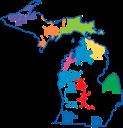
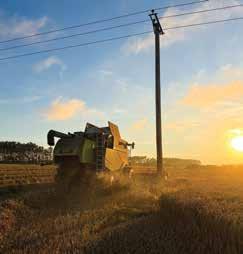


RECIPE CONTEST
See details on page 10. Cozy Bowls, due Nov. 1. Win a $100 bill credit!
GUEST COLUMN
See details on page 18. Share your fondest memories and stories. Win $200 for stories published!
To enter contests, submit reader content & more, visit countrylines.com/community
6 POWER OF CO-OP COMMUNITIES
From the REA to today—the enduring power of connection.
10 MI CO-OP KITCHEN
Fall Favorites: From harvest to home— recipes to fall for.
14 ADAM NIGHTINGALE: SMALL TOWN ROOTS, SPARTAN GLORY
How small-town values shaped a championship culture at Michigan State.
18 GUEST COLUMN
The Best Garage Sale Find: A 1940 Dodge and a lifetime of memories.
BOARD OF DIRECTORS
Howard Bowersox, Chair, District 8 219-670-0977 hbowersox@glenergy.com
Janet Andersen, Vice Chair, District 6 231-690-4622 jandersen@glenergy.com
Paul Byl, Secretary, District 7 231-742-2643 pbyl@glenergy.com
Dale Farrier, Treasurer, District 5 231-564-0853 dfarrier@glenergy.com
Mark Carson, Director, District 2 231-675-0561 mcarson@glenergy.com
David Coveyou, Director, District 1 231-347-4056 dcoveyou@glenergy.com
Richard Evans, Director, District 3 231-883-3146 revans@glenergy.com
John LaForge, Director, District 9 269-623-2284 jlaforge@glenergy.com
Mary O’Connell, Director, District 4 517-974-5797 moconnell@glenergy.com
PRESIDENT/CEO: Shaun Lamp 888-485-2537
BOYNE CITY HEADQUARTERS 1323 Boyne Ave. Boyne City, MI 49712
Call center hours: 7 a.m.–5:30 p.m. M–F Phone: 888-485-2537 Email: glenergy@glenergy.com
TO REPORT AN OUTAGE: Call 888-485-2537 or login to your account at gtlakes.com or the GLE mobile app.
Change of Address: 888-485-2537, ext. 8924
Great Lakes Energy is an equal opportunity provider and employer.
By Shaun Lamp, Great Lakes Energy President/CEO

October is National Cooperative Month, a time to thank you, our members, and highlight what it means to be part of a cooperative such as GLE.
This year, we are reflecting on the seven cooperative principles that guide us, and all cooperatives, and how they served as our bedrock during the unprecedented March ice storm and the challenges that followed.
The storm that struck northern portions of our service area in late March caused widespread damage, unlike anything GLE has ever experienced. Beyond the thousands of power and internet outages our members experienced in the days that followed the storm, the financial impact of the $155 million in storm restoration and rebuilding costs will be felt by our not-for-profit cooperative for years to come.
While we await further information on potential federal or state disaster relief funding, please know that we are working tirelessly on your behalf, exploring every available avenue to secure the resources needed for recovery. Our commitment to the long-term stability of your cooperative remains unwavering, and we will continue to advocate for the support our members deserve.
After thoughtful consideration, at an open member meeting on Sept. 17, your board of directors approved rate increases across all rate classes. We know this decision affects every member and do not take it lightly. As a not-for-profit cooperative, we must recover our expenses through rates. Every dollar our rates generate is reinvested in your cooperative. Your board, made up of members like you, takes its fiduciary responsibility seriously. Board members weigh many options to ensure both long-term stability and continued reliable service.
It is in times like these that the strength of the “cooperative difference” is most evident.
The cooperative principle of democratic control is at the heart of how we operate. Our board is elected by members to represent members, ensuring that your voice shapes the direction of GLE. Decisions are also guided by the principle of equitable member economic participation, which means the burdens and benefits of our cooperative are shared fairly among all members.
We also experienced the power of cooperation among cooperatives firsthand in the wake of the storm. When our lights went out, crews from other cooperatives came to our aid without hesitation. Their support was critical, not only in the field as crews worked tirelessly to restore service, but also behind the scenes as we coordinated logistics and resources. This solidarity is a powerful reminder that cooperatives form a network, a family, and we are stronger together.
This October, we are proud of the spirit of cooperation that defines us. Thank you for your understanding, your support, and for being part of this resilient cooperative. Together, we can weather any storm.
For more information on the ice storm and its impact on GLE, visit: gtlakes.com/ice-storm-information/ or scan the QR code.
gtlakes.com /greatlakesenergy /jointruestream
The ice storm that caused unprecedented damage to the northern portions of GLE’s service area earlier this year came with significant costs. To offset these stormrelated costs—which total an estimated $155 million, along with rising energy supply, infrastructure investment, and operational costs—at an open member meeting on Sept. 17, the GLE Board of Directors approved rate changes that will result in a net increase across all rate classes.
Under the newly approved rates, the kilowatt-hour (kWh) energy use rate for residential and seasonal members will increase by $0.01040 per kWh, and the fixed monthly charge will increase by $6.88. The board also approved an increase of $0.00118 per kWh to the Energy Optimization surcharge, which will help GLE comply with new, more stringent state-mandated energy waste reduction requirements. These changes equate to a $17.18 monthly increase for the average residential member using 800 kWh per month.
As a member-owned, not-for-profit electric cooperative without investors, GLE must rely on the rates members pay to cover our costs, including storm costs, interest on emergency loans, and rising costs impacting other areas of the business. Despite a recent federal disaster declaration, there is still considerable uncertainty around what types of relief funding may be available and which specific expenses might qualify.
These rate changes are designed to fairly distribute the responsibility for covering costs among our membership while generating sufficient revenue to ensure the cooperative’s long-term financial stability and its ability to provide members with the service they need to power their homes and businesses.
Other rate and tariff changes were also approved, including changes to the construction policy and special fees. See the legal notice below for more information or view the rate book online at gtlakes.com/account-information/.
Notice to Members of Great Lakes Energy Cooperative Rate and Tariff Changes Effective on or After Nov. 1, 2025
The Great Lakes Energy Board of Directors adopted the following changes to the cooperative’s rates and tariffs at an open member meeting on Sept. 17, 2025, in accordance with Michigan Public Act 167 of 2008.
1. An increase in the per-kWh and monthly charge for all rate classes. An increase to demand charges for applicable rate classes.
2. An increase in the state-mandated Energy Optimization surcharge for all rate classes, effective with bills rendered on or after Jan. 1, 2026.
3. Increases and additions to special charges.
4. Changes to the construction tariff and related charges.
5. Other changes to tariffs. For specific details on any of Great Lakes Energy’s rates or tariffs, please call 888-485-2537 or visit gtlakes.com/account-information/.

By Emily Haines Lloyd
When the Rural Electrification Act (REA) passed in 1936, it did more than bring electric lines to farms—it powered a movement. Built by neighbors for neighbors, electric cooperatives transformed rural life. Nearly 90 years later, that same spirit continues to connect Michigan’s rural communities—not just with electricity, but with tools for resilience, innovation, and opportunity.
This October, during National Cooperative Month, we’re reminded that co-ops are more than utilities—we are community builders. Michigan’s electric cooperatives honor that legacy by ensuring electric reliability and staying rooted in the values that built us: service, commitment, and cooperation.
Keeping the lights on in rural Michigan requires long-term planning and reliable generation. That’s why electric co-ops are investing in system upgrades, new energy resources, and smart technology to meet growing demand and withstand increasingly severe weather.

“Just like we brought power to the countryside nearly a century ago, co-ops are now bringing new and exciting energy options to the places that need it most,” said MECA CEO & President John Kran. “It’s not just about connection—it’s about unlocking potential in every rural home, farm, and business.”

Cooperatives ensure members have the dependable, affordable power they need—whether through traditional sources or renewable projects like solar, wind, and peaking plants. Reliability is the foundation of everything co-ops do, because when the power stays on, rural communities can thrive.
One of the most powerful aspects of the co-op model is that it’s not just a service—it’s a partnership. Co-ops are owned by the members they serve. That means you have a voice in how your co-op is run.
Every member has the right to vote for their board of directors, who set policy and guide decision-making. Even better? Members can run for the board themselves. It’s a grassroots, democratic process that ensures our direction is always grounded in the needs of the community—not outside investors.
Participation is at the heart of the cooperative difference. From attending your annual meeting to serving on the board, your voice helps shape the future of your electric cooperative.
Electric cooperatives are neighbors, partners, and problemsolvers. Every decision same make starts with a simple question: What’s best for our members? That’s why same invest in schools, support scholarships, advocate for rural issues, and work 24/7 to restore power in any conditions.
“Electric co-ops were founded on the idea that we’re stronger together. Every pole we set, every line we run, every investment we make—it all comes back to serving people, not profi ts,” said Kran. “That’s the power of community.”
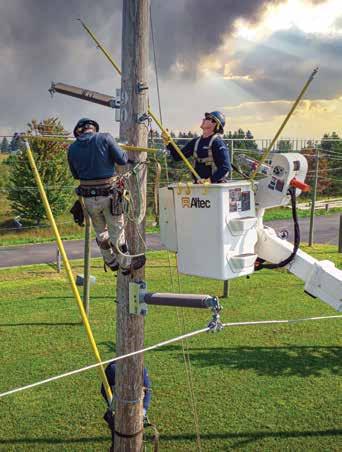
“Electric co-ops were founded on the idea that we’re stronger together. Every pole we set, every line we run, every investment we make—it all comes back to serving people, not profits.”
Michigan co-ops are not alone. We’re part of a national network of 942 electric cooperatives serving more than 42 million people across 56% of the landmass of the United States. That shared strength gives us access to resources, knowledge, and collaboration that help us better serve our nationwide communities—while still maintaining local control.
Great Lakes Energy members recently elected three members to three-year terms on the cooperative’s board of directors through a combination of mail-in and online ballots.
In District 6, incumbent director Janet Andersen of Fountain was reelected, receiving 775 votes in an uncontested race.
In District 8, incumbent Howard Bowersox of Stanwood prevailed over Andrew (Drew) Laughlin of Marion by a 534-390 margin.
In District 9, incumbent John LeForge of Delton was reelected, receiving 446 votes in an uncontested race.
Janet is retired from a career as a farm market manager, Howard is retired from careers as an engineer, manager, and high school teacher, and John is retired from a 35-year career with General Motors.
Great Lakes Energy members in districts 6, 8, and 9 received mail-in ballots along with their July/August issue of Michigan
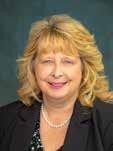
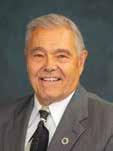
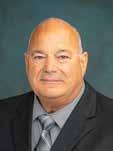
Country Lines. This year’s election marked the third year members had the option of voting online. Instructions for online voting were included with the mail-in ballots. GLE’s election management vendor, Survey and Balloting Systems of Eden Prairie, Minnesota, processed both online and mail-in ballots. The election concluded on Aug. 21, and results were announced at the cooperative’s annual business meeting on Aug. 27 at its headquarters in Boyne City.

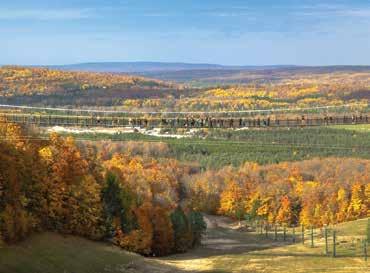
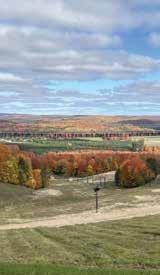




1. MOST VOTES SkyBridge in October, John Addington, Elmira
2. Grandson’s favorite bridge: Bridge Street Bridge in Portland, MI, Lynne Jutila, Stanwood
3. SkyBridge, Boyne Mountain, Rita Drew, Charlevoix
4. The Mighty Mac, Monica McConn, Grayling
5. Mackinac Bridge from McGulpin Point, Joan Sorenson, Levering
6. View from above: North tower of the Mighty Mac, Michelle Merrifield, Central Lake
Enter to win a $200 energy bill credit!
Submit your “Seasonal Beauty” photos by Oct. 25 for the January 2026 issue! Each month, members can submit photos on our website for our photo contest. The photo with the most votes is published here, along with other selections.
How To Enter: Enter the contest at gtlakes.com/photocontest/ Make sure to vote and encourage others to vote for you, too. The photo receiving the most votes will be printed in an issue of Michigan Country Lines along with other favorites. All photos printed in the magazine in 2026 will be entered into a drawing to win a $200 bill credit in December 2026.

RECIPE CONTEST Win a $100 energy bill credit!
Cozy Bowls, due Nov. 1. Submit your favorite recipe for a chance to win a $100 bill credit and have your recipe featured in Country Lines with a photo and a video. Submit your recipe at micoopkitchen.com, or send it via email (include your full name and co-op) to recipes@countrylines.com.
MUFFINS WITH MAPLE CREAM
Phil Ehardt, Great Lakes Energy
MUFFINS:
3 large eggs
1 (15-ounce) can pumpkin puree/canned pumpkin
½ cup neutral fl avored oil, like canola, vegetable, avocado
½ cup unsweetened applesauce
1 cup granulated sugar
2½ cups all-purpose fl our
2 teaspoons pumpkin pie spice
1 teaspoon baking soda
½ teaspoon baking powder
½ teaspoon salt
GLAZE:
1 cup powdered sugar
2–4 tablespoons heavy cream
½ teaspoon maple extract
Preheat the oven to 375 F. Line two standard muffi n tins with paper liners and set aside (24 muffi ns total). In a large bowl, whisk together the eggs, pumpkin, oil, applesauce, and sugar.
In a separate bowl, stir together the fl our, pumpkin pie spice, baking soda, baking powder, and salt. Add the dry ingredients to the wet ingredients and mix until just combined (don’t overmix or the muffi ns may be dense/heavy). Divide the batter evenly among the prepared muffi n tins, filling the cups about ⅔ full (or slightly more). You can use a cookie scoop to portion the batter into the muffi n tin. Bake for 15–20 minutes until the top of the muffi ns spring back to the touch and/or a toothpick inserted in the center of a muffi n comes out clean or with a few moist crumbs attached. Remove the muffi ns from the muffi n tin to a cooling rack to cool completely. For the glaze, whisk together the glaze ingredients, starting with the lesser amount of heavy cream and adding more as needed to make a pourable, but still thick, glaze. Drizzle the glaze over the cooled muffi ns with a spoon or fork and serve.
Watch a video of this month’s winning recipe at micoopkitchen.com/videos




Karla Oosting, Great Lakes Energy
2 pounds boneless, skinless chicken breasts
16 ounces Olive Garden Signature Italian Dressing (or favorite Italian dressing)
½ cup shredded Italian cheese
¼ teaspoon black pepper
8 ounces cream cheese
16 ounces penne pasta
½ cup Parmesan cheese
Add chicken breasts to slow cooker. Pour in the Italian dressing and sprinkle with cheese and black pepper. Place cream cheese on top. Cover. Cook on high for 4 hours or low for 5–6 hours. About 10–15 minutes before the cooking time is done, start cooking the pasta according to the package directions; drain well. Shred the chicken with 2 forks. Then add the pasta to the slow cooker and stir. Sprinkle with Parmesan cheese. Enjoy!
Mary Ellen Wynes, HomeWorks Tri-County
1 ready-made pie crust
1 teaspoon fl our
½ cup sugar
1 teaspoon cinnamon
½ teaspoon salt
¼ teaspoon ground cloves
1 (16-ounce) can (2 cups) pure pumpkin puree
1 (5-ounce) can evaporated milk
2 eggs, beaten
1 (8-ounce) container whipped topping, divided
½ cup chopped pecans
½ cup sour cream
Preheat oven to 425 F. Prepare pie crust according to package directions. In a large bowl, combine fl our, sugar, cinnamon, salt, cloves, pumpkin, evaporated milk, and eggs. Mix well. Fold in 1½ cups whipped cream (reserve remaining for topping) and pecans; stir. Pour into crust. Bake for 15 minutes. Reduce the oven temperature to 350 F and continue baking for 40–45 minutes or until a knife inserted in the center comes out clean. Cool. In a small bowl, fold the sour cream into remaining whipped topping. Dollop on the cooled pie.
Gary Geyer, Presque Isle Gas & Electric
3 pounds ground chuck
2 (14-ounce) cans kidney beans, liquid reserved
2 (14-ounce) cans pinto beans, liquid reserved
2 (14-ounce) cans black beans, liquid reserved
2 medium onions, diced
2 green bell peppers, diced
1 bunch celery, thinly sliced
2 (4-ounce) cans diced green chilies
1 (28-ounce) can diced tomatoes
1 (14-ounce) can diced tomatoes, chili ready
2 cups water
2 (14½-ounce) cans tomato sauce
3 tablespoons chili powder + 1 teaspoon chili powder, divided
1 tablespoon freshly ground black pepper
1 tablespoon garlic powder
2 tablespoons cumin
½ teaspoon seasoning salt
1–2 sliced jalapeños (for spicier chili)
• Optional toppings: shredded cheese, diced green onions, fi nely diced onions, crackers, sour cream
In a large pot, cook the ground chuck until no longer pink. Drain excess fat. Add only the liquid from the cans of beans (setting the beans aside). Then add the onions, peppers, celery, green chilies, diced tomatoes, water, tomato sauce, chili powder, pepper, garlic, cumin, seasoning salt, and jalapeños (if desired). Stir and cook on high for 20 minutes, stirring often. Then reduce to a simmer for 2 hours while stirring occasionally to prevent sticking/burning. After 2 hours of simmering and stirring, stir in all the beans. If too thick, add small amounts of water and simmer another 10–15 minutes. Serve with optional toppings, if desired.

When Co-op Month rolls around every October, it provides an opportunity for GLE and other cooperatives to celebrate what we call “the cooperative difference.”
One of the many ways GLE strives to make a positive difference in the lives of our members is by offering innovative programs and services.
A great example of these innovative efforts is the consumer analytics program that is available through members’ GLE online accounts or the GLE mobile app. The program provides members with much more detailed information about their home’s energy use than is available through typical billing statements.
The system, which GLE rolled out in 2024, uses a process known as disaggregation to analyze the same power consumption data from your home’s meter that is used to calculate your electric bill. The system doesn’t directly detect which device, system, or appliance in your home is using power. Instead, it uses computer models to look for distinct “fingerprints” of power use that can be attributed to appliances, such as refrigerators, air conditioners, water heaters, and ovens. With the right software algorithms, the usage of specific appliances or home systems can be identified and estimated.
To learn more about the GLE’s consumer analytics tools, visit: gtlakes.com/analytics/
Here’s a summary of the tools available:
• ENERGY DETAIL: This tool will provide a breakdown of your home’s electric use by the type of device, appliance, or system. Types of use include refrigeration, heating, cooling, laundry, cooking, water heating, lighting, entertainment, and always-on.
• SIMILAR HOME COMPARISON: This tool will compare your home’s energy use with similar-sized, average, and energyefficient homes in your area. The tool offers tabs for total energy use, heating, cooling, and always-on energy use.
• BILL ANALYSIS: This tool will allow you to compare your home’s energy use across billing cycles.
• BILL PROJECTION: This tool will provide an estimate of what your next electric bill will be based on your recent usage patterns.
• BUILD YOUR HOME PROFILE: Members can increase the accuracy of the estimates the consumer analytics tools provide by completing a short survey about their homes and the systems in it.
• MY RECOMMENDATIONS: This tool will provide recommendations for potential energy- and moneysaving steps you can take based on your home and your usage patterns.
Armed with the information provided through these tools, members can look for opportunities to cut their energy use and costs.
*Members must have their GLE online account set up to access the consumer analytics tools.
At GLE, making a positive impact on the lives of our members means much more than providing you with the reliable electric and internet services that power your lives. It also means offering a wide array of timeand money-saving ways to manage your account.
The key to many of these conveniences is through your GLE online account. Here are just a couple of the many tools available to you:
Say goodbye to clutter and hello to cost savings and convenience when you switch to paperless billing. With this feature enabled, you will no longer have to wait for your bill to arrive in the mail. Instead, as soon as your bill is available, you will receive an email that will let you know your statement is available for review, how much is due, and when.
The email will also provide a link to log in to your online account, where you can review the full billing statement and pay it online if you choose. Members who enroll in paperless billing may still use any of GLE’s many payment methods.

To enroll in paperless billing, simply log into your GLE online account or the GLE mobile app, select “Paperless Billing” in the Settings menu, and toggle the switches next to each account you wish to enroll.
When you enroll in Auto Pay, you’ll enjoy both added convenience and peace of mind knowing your monthly bill will be paid automatically on the due date each month. Although payments can be set up using a credit or debit card, the most convenient option is to have the payment deducted directly from your checking or savings account. This eliminates the hassle of updating credit or debit card expiration dates or other information in the future.
You can set up Auto Pay in your GLE online account or the GLE mobile app by selecting the “Auto Pay Program” in the “Bill and Pay” menu.
To access these and many more convenient account features, you must have your GLE online account set up. The good news is it only takes a few minutes.
1. Go to gtlakes.com and select the red “Log in to your account” button, or install the GLE mobile app on your mobile device.
2. On the login page, select the words “Don’t have an online account? Register now” and follow the prompts. You’ll need your GLE account number and a valid email address to complete your account setup.
More information on bill payment options is available at gtlakes.com/account-information .
If you need help setting up your GLE online account or enrolling in paperless billing, call us at 1-888-485-2537.

By Emily Haines Lloyd
Before the trophies and roaring Munn Ice Arena crowds, Adam Nightingale’s hockey world was a frozen pond in Cheboygan, Michigan. Skates laced tight, cheeks stung red by the winter air, he and his brothers battled for bragging rights. It was there, on that rough northern ice, that he learned lessons he still carries as Michigan State University’s head coach—chief among them, that “hockey is what you do, it’s not who you are.”
In Cheboygan, effort mattered more than accolades, and how you treated people mattered most of all. Today, Nightingale blends that smalltown humility with championship-level ambition, shaping both a winning program and the young men who play for it.
Sports were a family affair. Nightingale’s parents, both athletes themselves, raised their children with competitive spirits, and sports were a part of everyday life. So much so, all three Nightingale brothers have found their way to careers in sports—specifically, hockey. Adam’s older brother, Jason, is the Buffalo Sabres’ assistant director of
amateur scouting, and his younger brother, Jared, played professionally for nearly 10 years and now coaches for the Rockford IceHogs, an affiliate team for the Chicago Blackhawks. But for the Nightingale boys, the focus was never really about reaching the pros. “We were definitely competitive kids,” said Nightingale. “But our parents emphasized doing our best, treating people right, and finding what we were passionate about.”
Nightingale followed his passion for hockey to Lake Superior State University before transferring to Michigan State University for two years.
Wearing the Spartan jersey was more than an athletic milestone; it was almost prophetic. Years later, returning as head coach at MSU was a fullcircle moment.
Nightingale was hired in 2022, inheriting a hockey program that had won only 12 games the previous season.
In just his second season as head coach, Nightingale guided MSU to both the Big Ten

regular-season and tournament championships— the fi rst time in program history that the team captured both titles in the same year. He also earned 2024 Big Ten Coach of the Year honors. Still, he’s quick to share the credit. “We’ve got great players, great staff, great people. Championships are a team effort,” he said.
Coaching wasn’t part of a grand plan. After graduating from college and four seasons in the minors, with his fi rst child on the way, Nightingale left the game for a job with a construction company to secure health insurance. But the pull of the rink never faded.
He began teaching economics and coaching hockey at a boarding school, where he discovered the deep satisfaction of mentoring young athletes.
“Coaching is about relationships,” said Nightingale. “I’ve been the guy on the power play, and I’ve been the guy not on the ice when we’re one goal down. Part of coaching is getting your players to see the value of every role.”
Nightingale’s approach to coaching is steeped in the values of rural Michigan—humility, resilience, and community. “There’s a humility in northern Michigan,” he said. “It’s never about your job title or money. It’s about how you treat people.”
Growing up in a small town also meant accountability. “If you want something, you have to work for it,” he said. “There’s a little bit of a chip on your shoulder. Which I think can be a positive thing for an athlete.”
That mentality resonates with his current Spartan players, fostering a culture of competitiveness and continuous improvement. “When something doesn’t go our way, we fi gure out why and get better,” he said.
Now, behind the bench at Munn Ice Arena, Nightingale carries both the tradition of Spartan hockey and the lessons learned on Cheboygan ice.
When the noise of the season fades and the ice lies quiet again, it’s easy to see how that boy from Cheboygan grew into a coach who still plays for all the right reasons.
“Being here,” Nightingale said, “just feels like right.”

I’ve been the guy on the power play, and I’ve been the guy not on the ice when we’re one goal down. Part of coaching is getting your players to see the value of every role.” “
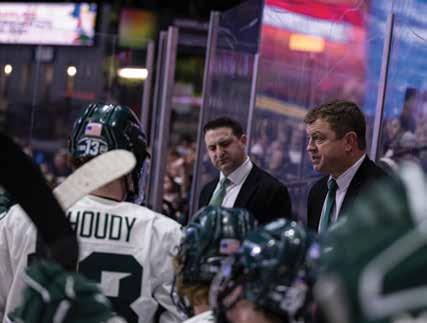

As the year winds down, Great Lakes Energy members have a unique opportunity to boost their home’s energy efficiency and put some money back in their pockets. But the clock is ticking. Because of new state-mandated energy optimization rules taking effect in 2026, the current rebate program will be changing Jan. 1, 2026, to align with these new requirements. While future programs will still focus on efficiency, the specific products and incentive amounts you see today may look different.
Now is the perfect time to invest in products that will save you money long-term and offer an immediate financial incentive. GLE currently offers a variety of rebates through the Energy Wise program, including those for new heat pumps, smart thermostats, and ENERGY STAR-certified appliances like refrigerators and clothes dryers. You can also find incentives for electric yard equipment, which makes switching from gas-powered tools a smart and easy choice.
These rebates are available on a first-come, first-served basis, and funds are limited. To ensure you don’t miss out on the current offerings, visit gtlakes.com/energy-wise By taking action today, you can make a smart investment in your home’s comfort and efficiency while locking in the benefits of the current Energy Wise program.
The steps to savings are simple:
1. Visit gtlakes.com/energy-wise and browse the many energy efficiency rebate options.
2. Verify that the system or product you are considering meets the rebate requirements.
3. Purchase the qualifying product or have the qualifying system installed before Dec. 31, 2025.
4. Return to gtlakes.com/energy-wise and use the links provided to submit your online rebate application within 60 days of purchase/installation.
5. Enjoy your new, energy-efficient product and your rebate. (Rebates of $100 or less will be provided through a bill credit. For rebates of more than $100, members may choose between a bill credit or receiving a check.)
Among the rate changes that GLE’s board of directors approved at an open member meeting on Sept. 17 was a $6.88 increase to the residential and seasonal monthly charge.
The need for this increase stems directly from two primary factors: the estimated $155 million GLE incurred in restoration and rebuilding costs following the March ice storm, and the ongoing cost increases that our industry is facing. In addition to the rising costs of power supply, infrastructure, and equipment, our capital costs which include loan interest, depreciation, and taxes, have increased significantly.
While the per-kWh rates members pay for the electricity they use are straightforward, the costs covered by the “monthly charge” might be less obvious.
What’s covered in the monthly charge?
This charge is the same every month for all members in the same rate class, regardless of how much electricity they use. The fee covers the cooperative’s operating expenses that are not tied to your electric consumption. It covers the cost of keeping the cooperative and its distribution system operating and ready to provide service to its members around the clock—including storm response and restoration work.
Here’s a closer look at some of the costs the monthly charge covers:
• OPERATIONS AND MAINTENANCE: The biggest share of the monthly charge covers the cost of installing and maintaining poles, wires, transformers, and other distribution system equipment. Also included in this
Each Monthly Charge Dollar Is Spent
category is the cost of regular tree trimming and other system reliability work, along with the associated transportation costs. Serving more than 132,000 members across 26 counties, GLE is one of the largest electric cooperatives in the country.
• SUPPORT SERVICES: In addition to costs associated with accounting, metering, and billing, GLE operates eight local offices. These offices allow us to provide better service to our members and respond to outages quickly. Operating these offices involves many labor, equipment, supplies, and other fixed costs. GLE also maintains a 24-hour emergency dispatch center to coordinate both regular service work and outage restoration efforts.
• CAPITAL COSTS: GLE also incurs costs such as equipment depreciation, interest on long-term loans, insurance, taxes, and other normal business expenses.
• MARGINS: Although GLE is a not-for-profit co-op, to ensure the company’s long-term financial stability, it’s important for its income to exceed its costs. The cooperative uses this excess, known as a margin, as a cushion against unexpected costs and to prepare for future system investments. When financial conditions allow, GLE returns margins to its members in the form of capital credits.
As costs rise in the categories listed, the monthly charge will increase to cover those costs, allowing GLE to continue providing reliable service.
More information on GLE’s rates is available online at gtlakes.com/faq or gtlakes.com/account-information/
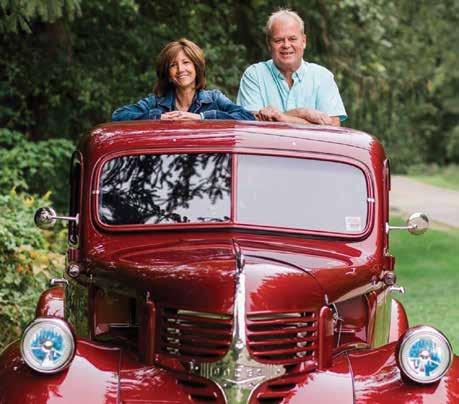
By Catherine Drager, a HomeWorks Tri-County Electric Cooperative member
I was driving past a garage sale one day and spotted an old dresser in the driveway. Short on time, I didn’t stop. I asked my husband Marvin to check it out the next day to see if it was something I could refi nish for the grandchildren’s bedroom. He stopped at the garage sale but came home and told me that he bought a truck. Puzzled, I said to him that I didn’t see a truck for sale there, and he told me the owner had a 1940 Dodge truck, all in pieces, in the garage and on the rafters, that he never got around to putting together and restoring.
Needless to say, those pieces came home with him. He worked on it in his spare time, between running his business and visiting our cabin in Farwell. He dedicated more time to it once our son was getting married at the Packard Proving Grounds in Shelby
Township in May of 2016. You could have one of their classic Packard cars to display at the reception, or bring in your own classic vehicle. The Dodge wasn’t completed at that point, but we were happy to use our late brother-inlaw’s 1930 Model A for the wedding.
The truck was completed shortly after, and my husband enjoyed taking it to the Downriver and Woodward Dream Cruises and car shows, and driving it around town. He even put a lap belt in it for me so that I didn’t bounce around on the bench seat. Many family members and friends enjoyed rides in the truck, and he loved sharing the stories of searching for the parts and the challenge of putting it all together. Marvin passed in 2021, but I am grateful he never checked out that old dresser, but was able to enjoy his best garage sale “fi nd.”
“Many family members and friends enjoyed rides in the truck, and he loved sharing the stories of searching for the parts and the challenge of putting it all together.”
GUEST COLUMN Win $200 for stories published! Share your fondest memories and stories. Win $200 for stories published. Visit countrylines.com/community to submit.



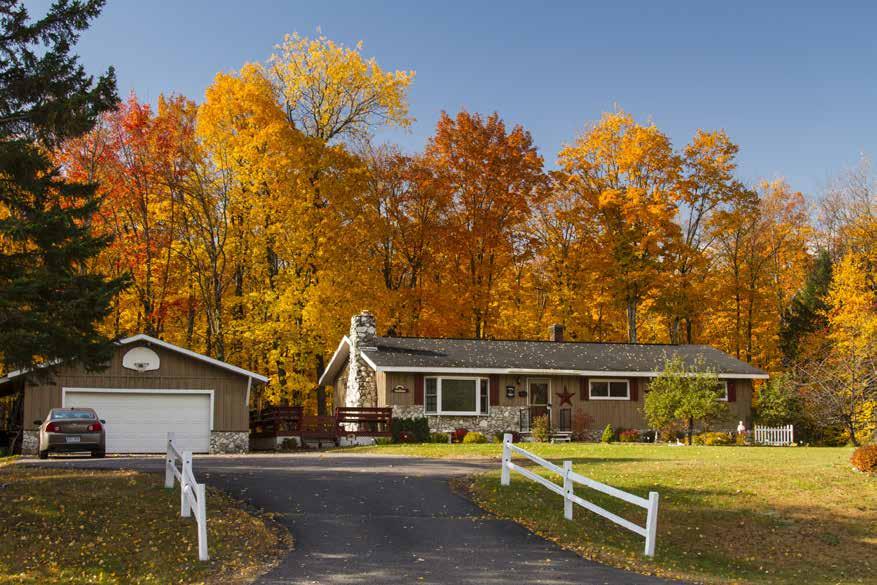

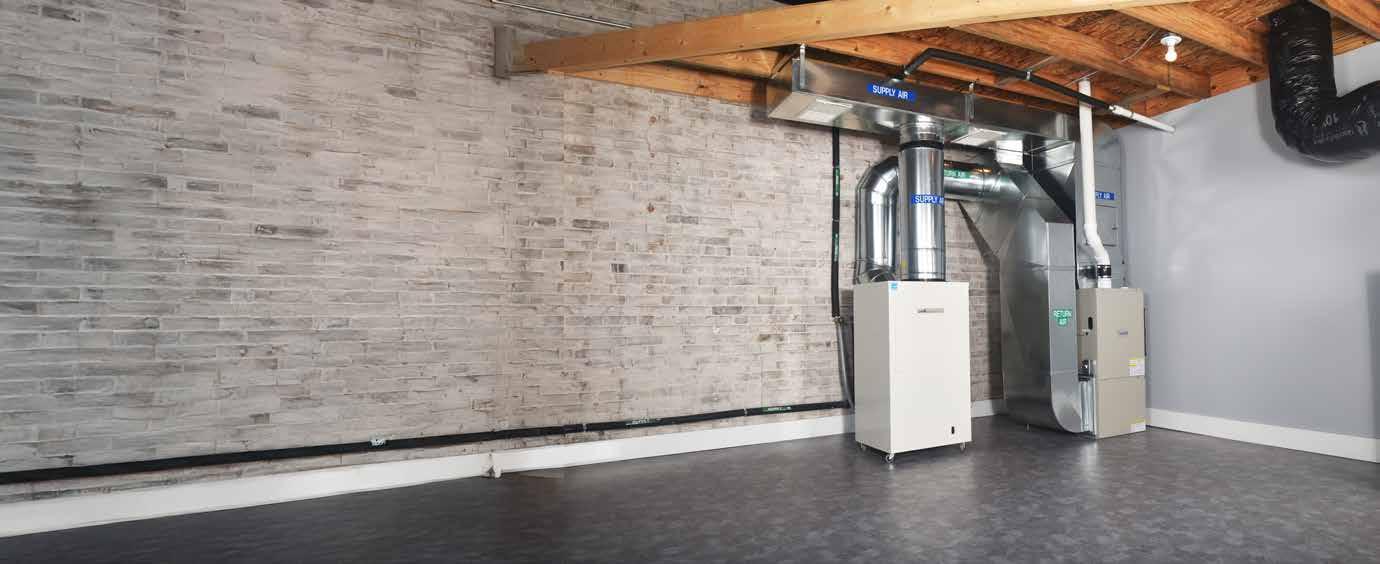

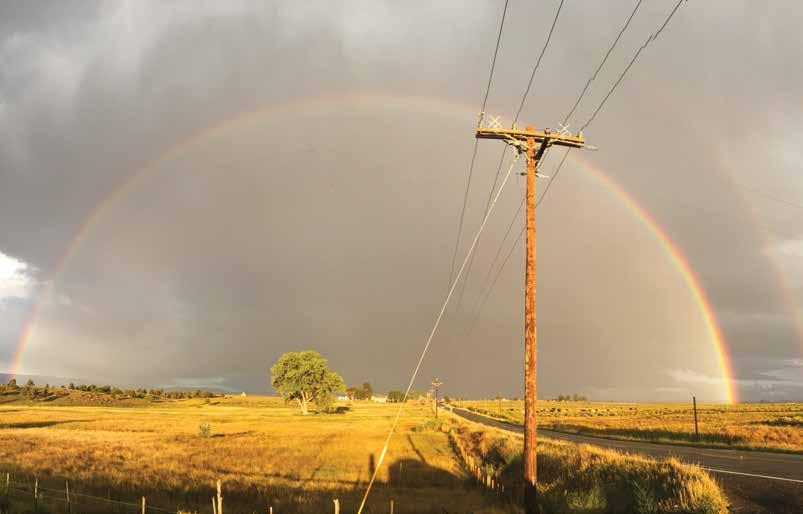
Electric cooperatives are not-for-profit, community-led utilities. Because we are a co-op, we can adapt to our local members’ needs, providing the programs and services you care about most.
That’s the power of co-op membership.